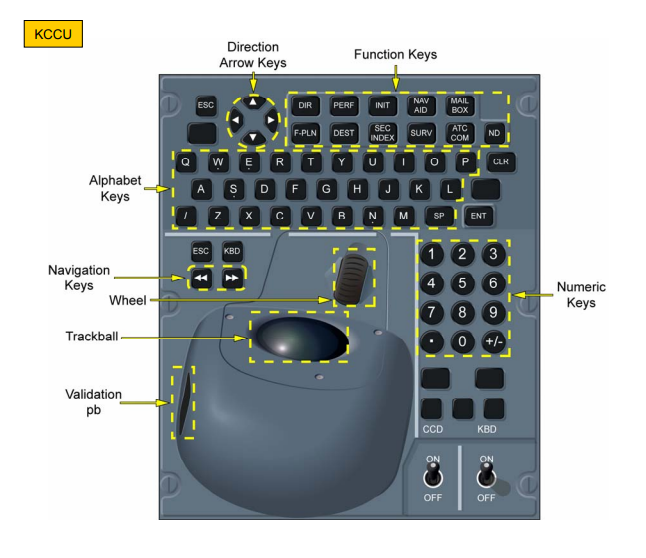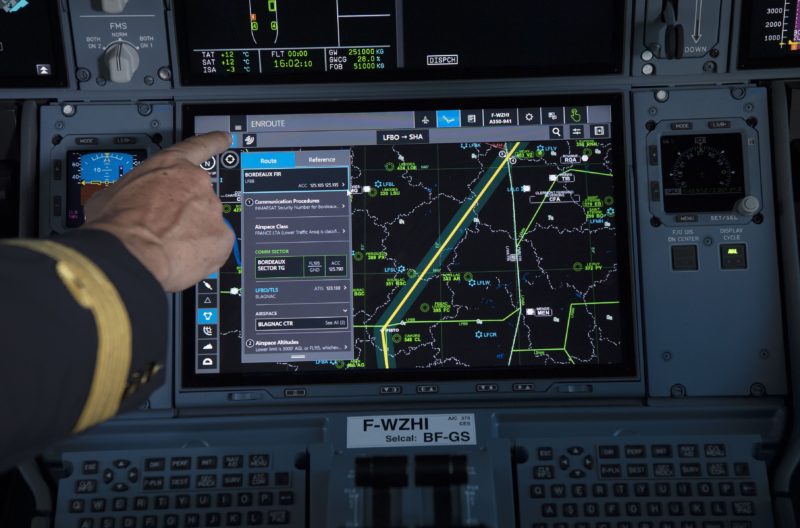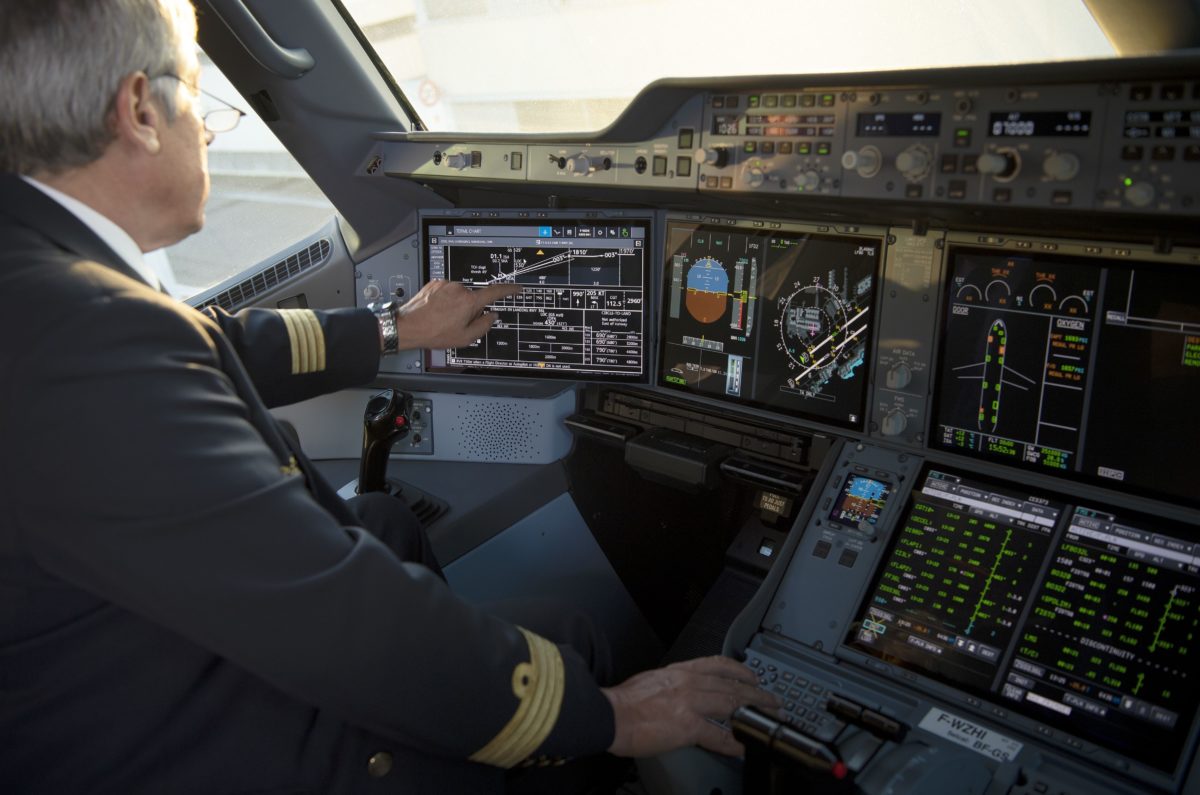Airbus has delivered the first A350 with cockpit touchscreens to China Eastern Airlines. following European certification in November.
Airbus is offering airlines the option to adapt three displays in the A350-900 and A350-1000 to touchscreens, which will allow for fluid flow around the cockpit in an intuitive fashion.
Available to adapt are the two outermost displays, generally responsible for electronic flight bag information, and the lowest of the two central displays, which act as a multi-function display.
The new feature is available to airlines as an optional extra and presents enhanced operational efficiencies, greater crew interaction, cockpit symmetry and smoother information management. Airbus says they’ve secured around 20 customers for the feature.
“Airbus continues to set the industry trends in aircraft cockpit design with these new interactive touchscreen displays in the A350. With our partner Thales we are very proud to bring this technology to our customers, to enhance their aircrews’ operations.”
Patrick Piedrafita, Head of Airbus’ A350 XWB Programme
Despite being a more fluid approach to data interaction, the feature does not replace the existing keyboard-cursor control unit (KCCU) found on the A350, as well as the A380.

Airbus gained certification for the optional extra by the European Aviation Safety Agency in November, following extensive testing on their A350-1000 test platform.
Pilots flying A350s with touchscreen displays installed will be able to use common gestures found on phones and tablets, such as pinch-zooming and panning. Additionally, the touchscreen display allows both pilots to interact with the lower central display simultaneously; whereas with the KCCU, only one pilot at a time could interact with it when engaged with that specific display.

Airbus suggests that the touchscreens facilitate greater flexibility before takeoff, in-flight/cruise and during approach preparation. Included in their examples is the computing of performance data for various stages of flight, accessing charts, accessing en-route data and consulting arrival information to enter into the flight management system.
However, during turbulence, Airbus test pilot Jean-Michel Roy says to Flight Global that the KCCU may be more stable and comfortable to use.
Airbus has not indicated any plans to introduce the technology to other aircraft and notes that there is a certain level of retrofit ability for the A350. There are no plans in place to make this development a standard feature, it will be remaining as a customer option for now.
The specific aircraft delivered to China Eastern Airlines is an A350-900 featuring registration B-30CW. Powering the aircraft are two Rolls-Royce Trent XWB-84 engines.




